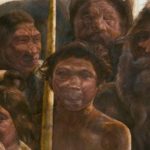Oldest Ancient-Human DNA Details Dawn of Neandertals0
- Ancient Archeology, From Around the Web
- February 23, 2017
Sequence of 430,000-year-old DNA pushes back divergence of humans and Neandertals

Sequence of 430,000-year-old DNA pushes back divergence of humans and Neandertals

A unique assemblage of 28 hominin individuals, found in Sima de los Huesos in the Sierra de Atapuerca in Spain, has recently been dated to approximately 430,000 years ago.

Research led by the University of St Andrews and published yesterday (Monday 6 February) in Nature – provides new insight into how life evolved alongside changes in the chemistry of Earth’s surface.

Many MetroSpirituals feel different, but are not sure how or why. Some feel they don’t really belong here. Perhaps it’s because Earth has not always been their home planet. It’s not as farfetched as some may think! The “Who are we?” and “Why are we here?” has mystified humans for centuries. History is peppered with

New evidence found by scientists has started to suggest that the people living on the islands of Melanesia could have human DNA the world has never seen.

It’s a mystery that has puzzled climbers and lovers of legends for centuries – but it may finally have been solved.

According to DNA tests, the Paracas skulls are not of human origin.

The Neanderthals disappeared about 30,000 years ago, but little pieces of them live on in the form of DNA sequences scattered through the modern human genome.

Claudie André-Deshays Haigneré is at the center of an enormous mystery.

36,000-year-old skeleton reveals how the genes of the earliest inhabitants of Europe survived the Ice Age